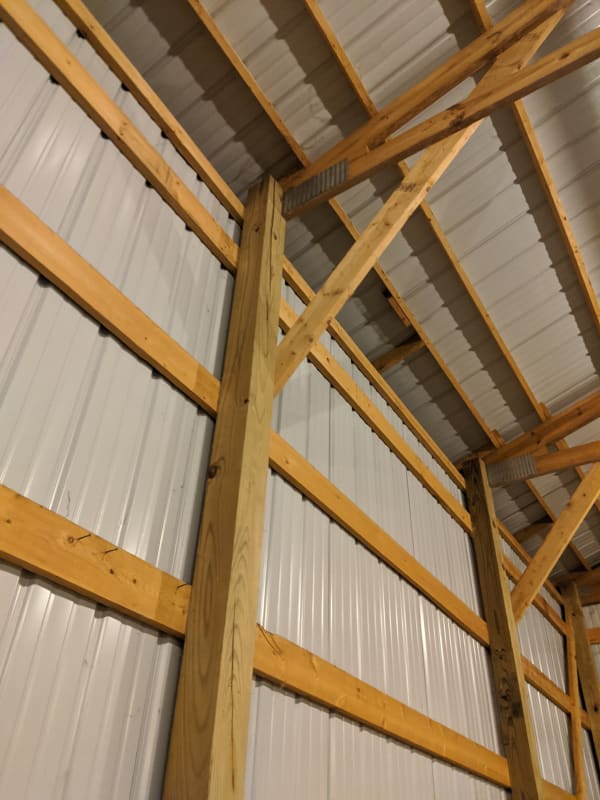rjpope42
Materials
- Jan 6, 2020
- 5
Hi all, engineer from another realm stopping in. I have a BSEE and Masters of Engineering in Materials Science, but neither of those qualify me to do structural engineering so I'm seeking some quick advice.
I'm looking to decorate the exposed 40' trusses in my shop, the thought being:
-attach dimensional lumber to the sides of the trusses to just make them appear to be the same thickness as the 6x6 poles.
-cut the slop off the 2x4 lateral braces, and maybe thicken them for visual balance
-add extra knee braces for symmetry
-stain all the wood dark brown
I've read that decorating trusses "usually doesn't require engineer involvement", and I'm removing nothing, only adding. But better safe than sorry, so I'm here to see if this gets a reaction of "nah you're just adding decoration that, if anything, is extra bracing so nailgun away" or if it's more like "hire a structural engineer or your trusses will collapse under their own weight"
Thanks for helping me get sorted!
(Working on uploading pics)
I'm looking to decorate the exposed 40' trusses in my shop, the thought being:
-attach dimensional lumber to the sides of the trusses to just make them appear to be the same thickness as the 6x6 poles.
-cut the slop off the 2x4 lateral braces, and maybe thicken them for visual balance
-add extra knee braces for symmetry
-stain all the wood dark brown
I've read that decorating trusses "usually doesn't require engineer involvement", and I'm removing nothing, only adding. But better safe than sorry, so I'm here to see if this gets a reaction of "nah you're just adding decoration that, if anything, is extra bracing so nailgun away" or if it's more like "hire a structural engineer or your trusses will collapse under their own weight"
Thanks for helping me get sorted!
(Working on uploading pics)


